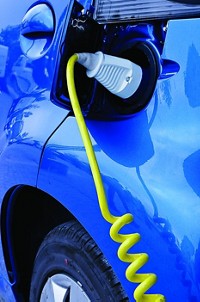Advertisement
Grab your lab coat. Let's get started
Welcome!
Welcome!
Create an account below to get 6 C&EN articles per month, receive newsletters and more - all free.
It seems this is your first time logging in online. Please enter the following information to continue.
As an ACS member you automatically get access to this site. All we need is few more details to create your reading experience.
Not you? Sign in with a different account.
Not you? Sign in with a different account.
ERROR 1
ERROR 1
ERROR 2
ERROR 2
ERROR 2
ERROR 2
ERROR 2
Password and Confirm password must match.
If you have an ACS member number, please enter it here so we can link this account to your membership. (optional)
ERROR 2
ACS values your privacy. By submitting your information, you are gaining access to C&EN and subscribing to our weekly newsletter. We use the information you provide to make your reading experience better, and we will never sell your data to third party members.
Environment
Incentive for electric cars increases CO2 pollution
Fudge factors in fuel economy standards allow carmakers that sell electric vehicles to also sell more gas hogs
by Janet Pelley
March 2, 2016

Politicians around the world are turning to fuel economy standards as a way to cut greenhouse gas emissions from cars and trucks. However, many economists say that, compared to a tax on carbon emissions, such standards are problematic since they don’t discourage driving and have loopholes that result in higher carbon dioxide releases. Indeed, a new study finds that electric car incentives built into the U.S. fuel economy standards will boost CO2 emissions by 30 million to 70 million metric tons for vehicles sold from 2012 through 2025—equivalent to adding an extra conventional car to the fleet each time an alternative fuel vehicle is sold (Environ. Sci. Technol. 2016, DOI: 10.1021/acs.est.5b02842).
Transportation is the second largest source of greenhouse gases in the U.S., accounting for 28% of emissions. In 2012, the Environmental Protection Agency launched a set of rules requiring new passenger cars and light trucks to meet or exceed 7.9 L/100 km fuel efficiency, improving to 4.3 L/100 km by 2025. For the first time, these regulations also included a CO2 standard: Car manufacturers can sell whatever mix of gas guzzlers and high-efficiency cars they want, as long as the average greenhouse gas release of all the cars they sell in a single year meets the EPA standard.
However, the EPA added an incentive to get more alternative fuel vehicles (AFVs)—such as electric cars, hybrids or natural gas vehicles—on the road. For each conventional car sold, companies use EPA CO2 emissions estimates for that make and model. But for AFVs, the incentive allows companies to use emissions rates below the EPA estimate and counts each as more than one car sold, depending on the type of vehicle, in its emissions calculations. Before adopting the standards, the EPA knew that the incentive would allow companies to sell more gas guzzlers than they would have otherwise and still meet the average greenhouse gas target. “But the EPA model was complicated,” says Jeremy J. Michalek, a mechanical engineer at Carnegie Mellon University. He wanted to characterize more precisely the effect of the incentive.
Michalek and his team put together a model that calculates greenhouse gas pollution from the U.S. car and truck fleet based on projected vehicle sales through 2025, miles traveled, and average CO2 emissions for those vehicles. The researchers compared two cases—one with incentives for AFVs and one without. The scientists assumed that the incentives don’t change the total number of vehicles sold but could change which vehicle types are sold.
The scientists conclude that the AFV incentive will result in an additional 30 million to 70 million metric tons of CO2 spewed into the atmosphere over the lifetime of vehicles sold from 2012 to 2025. “For instance, if you bought a Nissan Leaf [a plug-in, all-electric vehicle] in 2017, the incentives allow the automaker’s fleet to increase lifetime greenhouse gas emissions from other parts of its fleet by about 42 tons of CO2—comparable to adding a whole new vehicle’s worth of emissions,” Michalek says. He notes that the net effect of the AFV incentives is equivalent to relaxing the greenhouse gas standard by 0.8 - 1.5%, a large value given that transportation is such a huge source of emissions.
“The EPA policy is risky since the environment loses in the short run, and the long-run benefits are not crystal clear,” says Arthur van Benthem, an economist at the University of Pennsylvania who was not involved in the study. The incentive may help build an electric vehicle infrastructure with an eventual environmental benefit, he says, but at the same time, many studies have questioned the cradle-to-grave environmental benefits of electric cars. “A carbon tax or nationwide cap-and-trade system is a much better way to get more AFVs on the road because that would tax electricity and gasoline on equal footing, and no other policies are needed,” he says. ◾




Join the conversation
Contact the reporter
Submit a Letter to the Editor for publication
Engage with us on Twitter